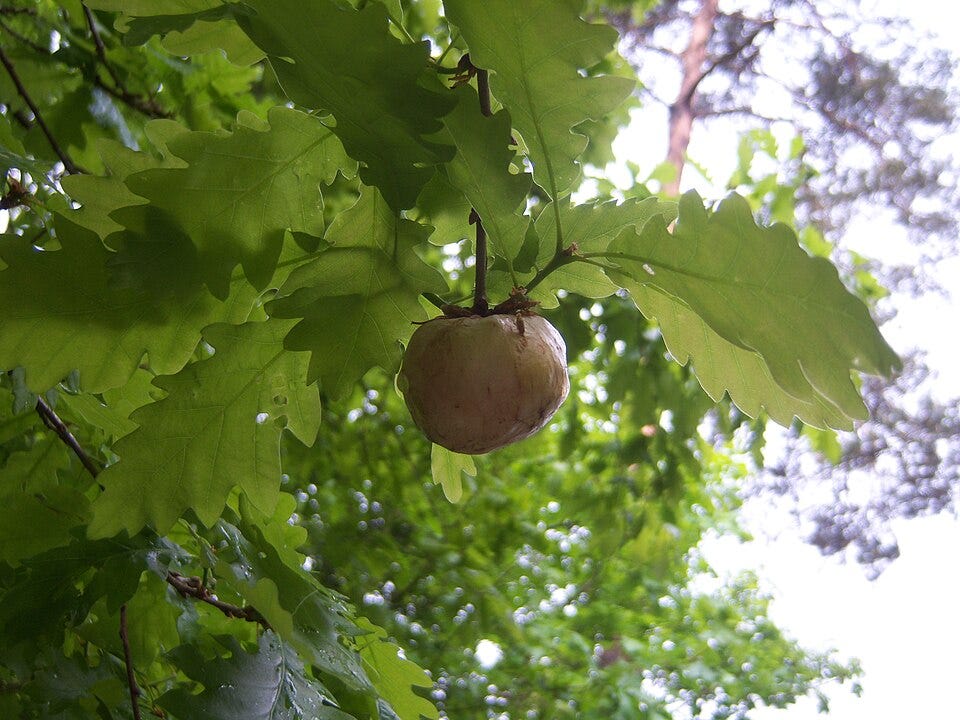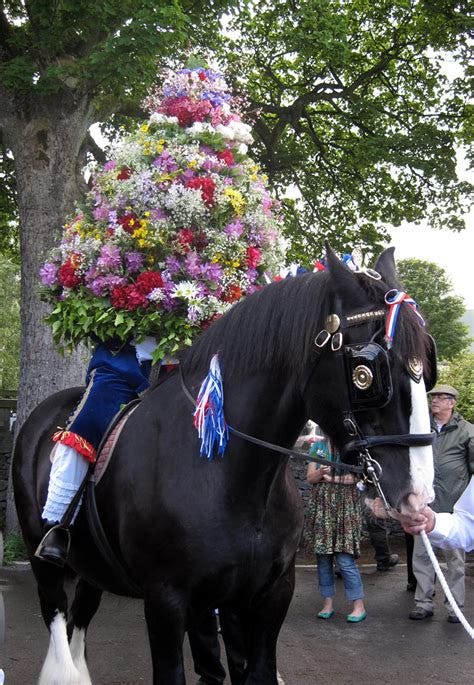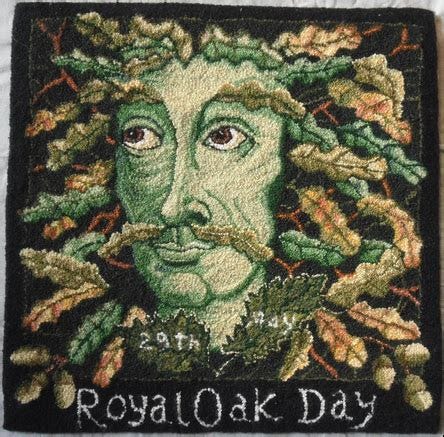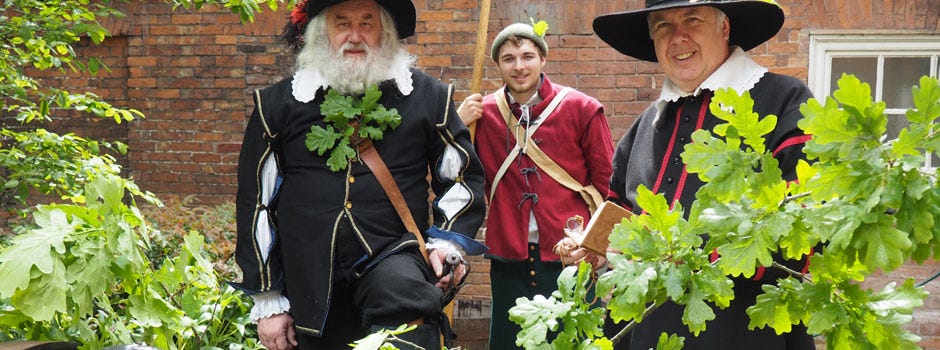So, we arrive at Oak Apple Day. This festival dates from the time of Charles II and marks the restoration of the Stuart monarchy after the interregnum of the Commonwealth, when we English had a brief attempt at a revolution, cut off a king’s head, and had a short-lived republic of sorts.
Prince Charles had to flee the country lest he be picked up by the Parliamentarians and detained at the pleasure of Oliver Cromwell, like the rest of Charles I’s children – one of whom died in captivity. In his flight to the coast, Prince Charles had many sudden escapes, but the one that remains in memory is his hiding in an oak tree, following the Battle of Worcester in 1651, in the grounds of Boscobel Hall in Staffordshire.
Afterwards, he fled to the continent, where he eked out a straightened existence until his restoration on 29 May 1660, when all of London came out to welcome him home. On 1 June 1660, Samuel Pepys recorded in his diary, ‘that Parliament had ordered the 29th of May, the King’s birthday, to be forever kept as a day of thanksgiving for our redemption from tyranny and the King’s return to his Government, he returning to London that day”. And so Oak Apple Day entered our folk calendar, as a remembrance of the Restoration of the Stuart Kings after the disagreableness of the Commonwealth, when both Christmas and Theatre-going were banned, along with many other activities.
An oak apple has nothing to do with apples, but refers to the oak-gall, a swelling that often forms on oak trees and which used to be one of the main ingredients in ink-making. As an obligatory holiday, Oak Apple Day was abolished in 1859, but we used to still celebrate it at school in the 1950s in Hampshire. Heaven forefend if you turned up at school without either an oak apple (or gall) pinned on your clothes or a bunch of oak leaves! Bullies who enforced the custom would either pinch you black and blue or else thrash your legs with nettles. Fortunately, the walk to school was about a mile and half, and there were enough oak trees en-route to ensure that you came through the school gates suitably equipped, with at least a sprig of oak-leaves thrust into your cardigan or jacket. Unfortunately, I had to gather my oak leaves very quickly. as most of my route to school was also walked by one of the nastier bullies, Mark Stevens, who could be unmerciful for most of that mile and a half.
Oak Apple Day is still up-kept in different parts of England as Restoration Day, Royal Oak Day, or Shick Shack Day. Upon-on-Severn celebrates it, as does Worcester, St Neots, Northampton, Aston-under-Clun. In Castleton, they have Garland Day where a bell-shaped frame stuffed with flowers in put over a male rider who parades with his Lady.
If you have toured Britain, you will have seen many public houses are called the Royal Oak –well, they are all named from this day’s celebration. This day is celebrated as Founder’s Day by the gentlemen pensioners of the Royal Hospital Chelsea, founded by Charles II in 1681 for retired and indigent soldiers. This festival fuses many things together, as Charles becomes subsumed into Jack in the Green, the lushness of Maytime, and the coming into leaf of the oak tree itself which arrives later than many trees, though usually by mid-May.
The Stuarts have left us three folk rituals: James I’s survival of the Gunpowder Plot gave us Bonfire Night; Charles II’s hiding in an oak tree, left us Oak Apple Day; while the pregnancy of Mary of Modena, second wife to James II, whose heir was disputed as putative, left us the unsavoury custom that any queen’s confinement should be attended by members of the Privy Council. This was entirely about the Protestant prejudice against the Catholic monarch James II, whose children should have succeeded to the throne: Mary of Modena’s giving birth to a male heir was passed off as a hoax, by those unwilling to believe that they might have to serve a Catholic king. The custom of ministers attending a queen’s confinement was quite rightly done away with in the 20thcentury as antiquated and embarrassing. It was only finally, after the birth of Prince Charles, now our King Charles III, when only the Home Secretary was booked to attend the confinement, that this custom was finally quashed.
May Oak Apple Day give us a kindly reminder that we must fight for and enter into our own restoration from tiresome things, daft régimes, and all who would topple the liberties of humanity!












I’ve visited Boscobel House. The priest hole is very evocative. I think the young Charles hid there. (After the oak tree ) While I wouldn’t have wanted to live under the Protectorate, the Stuart monarchs weren’t models of probity but at least Charles believed in fun.
This is a lovely post. I remember a city called Royal Oak growing up in Michigan but had no idea about the name!